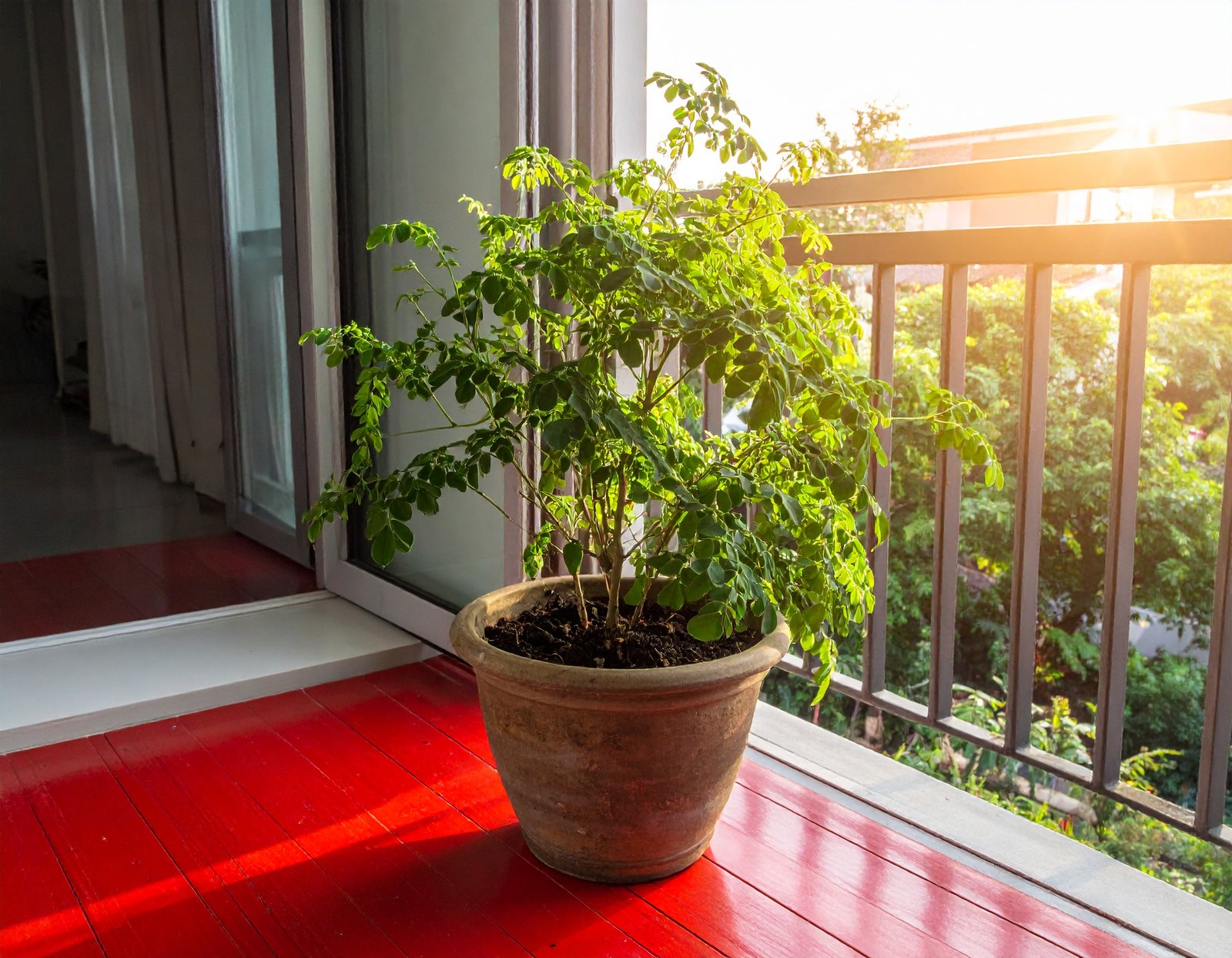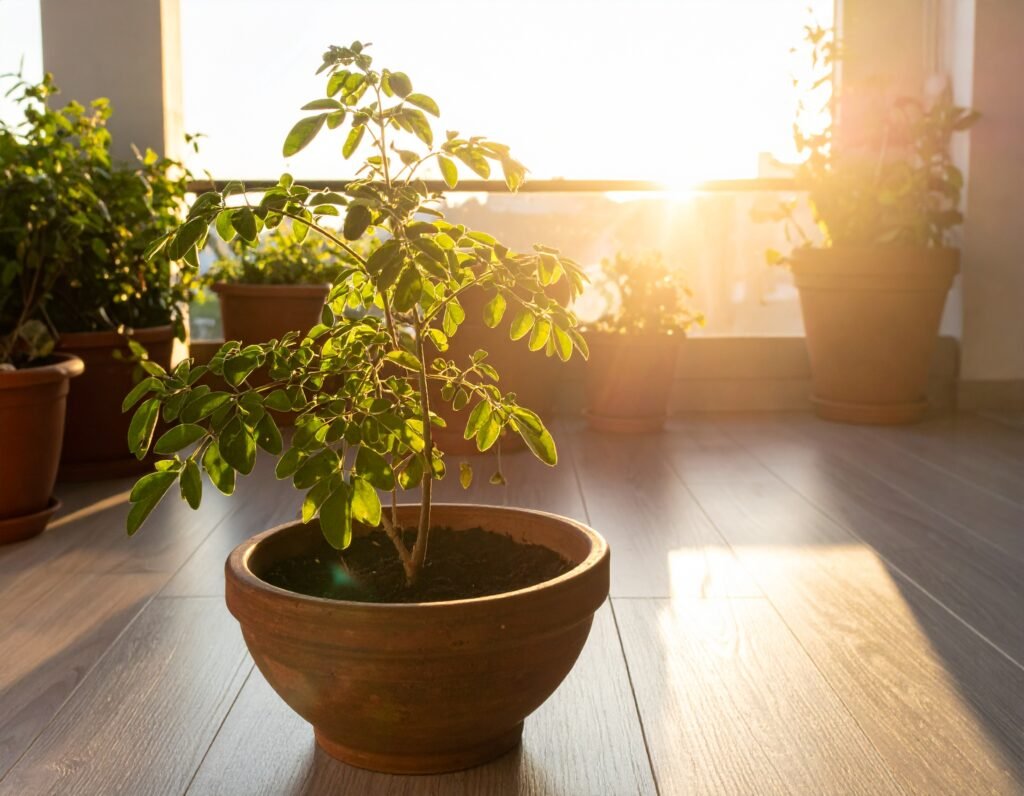
Moringa: The Superleaf – Step-by-Step Guide to Planting, Growing & Using for Nutrition and Wellness
Moringa oleifera, often called “the miracle tree,” is one of the world’s most nutrient-dense plants. Rich in vitamins, minerals, protein, and antioxidants, moringa leaves are a powerful addition to any wellness routine. Whether you want to grow it in your garden or containers, moringa is easy to cultivate and offers an abundance of benefits for nutrition, energy, and natural healing. In this guide, discover how to plant, care for, harvest, and use moringa to fuel your healthiest life.
Gram for gram, moringa leaves contain more vitamin C than oranges, more calcium than milk, and more iron than spinach—making it a true “superleaf” for global nutrition!



Proven DIYs and product picks—get your cheat sheet!!
Download Now
TruVarin: Varin-Rich Hemp, Saw Palmetto & Green Tea
- Features varin-rich hemp oil, peppermint, saw palmetto, green tea, caffeine
- All-natural actives for scalp support and fuller-looking hair
- Free from harsh chemicals—gentle on scalp and hair roots
How to Plant Moringa: Step-by-Step
Moringa (Moringa oleifera), often called the “Miracle Tree,” is one of the fastest-growing and most nutrient-rich plants you can cultivate. Its leaves, pods, and seeds are prized for their protein, vitamins, and minerals—making it a valuable addition to any wellness garden. With a little warmth and sunshine, moringa thrives in both tropical and temperate settings as a hardy, drought-resistant tree or shrub.
Step 1: Start from Seed or Cutting
Plant moringa seeds about 1 inch deep directly in the ground or in pots. You can also propagate from stem cuttings—choose a healthy, woody stem about 1 inch thick and 2 feet long, and plant it in warm, well-drained soil. Seeds tend to sprout in 1–2 weeks in ideal warmth.
Step 2: Choose the Right Soil and Site
Moringa is incredibly adaptable and grows well in sandy, loamy, or even poor soils as long as drainage is good. It dislikes waterlogging, so choose a site with excellent runoff or raised beds. Full sun is essential—moringa loves heat and light, flourishing even in hot, arid conditions.
Step 3: Spacing for Growth
Decide whether you’ll grow moringa as a tree or a shrub. For trees, space plants 6–10 feet apart to allow for canopy expansion. For regular leaf harvest and easier maintenance, plant closer—about 2–3 feet apart—and keep it pruned to waist height for bushier growth.
Step 4: Watering
Give new seeds or cuttings a thorough watering at planting, then water lightly every few days until established. Once mature, moringa becomes highly drought-tolerant and needs only occasional watering. Avoid overwatering, as soggy roots can lead to rot.
Step 5: Ongoing Care & Pruning
Moringa grows rapidly—up to several feet in its first season! Regular pruning encourages a bushier shape and keeps the leaves tender and easy to harvest. Trim back long branches to stimulate new growth and prevent the tree from becoming too tall to manage.
Garden Tip
For a steady supply of fresh leaves, grow moringa as a multi-stemmed shrub rather than a tall tree. Frequent harvesting promotes lush, nutrient-rich foliage and keeps your plant compact, productive, and beautiful year-round.



Ready to grow your own? Try the Organic Home Garden Kit by Spade of Fork —ideal for new gardeners and herbalists, paired with Espoma Organic Fertilizer and Plant Food for All Berries to give seedlings a strong start. Shop at Amazon
Caring for and Harvesting Moringa
Moringa is a resilient, fast-growing plant that rewards minimal care with abundant nutrient-rich leaves and pods. With simple maintenance and mindful harvesting, you can enjoy a continuous supply of this “miracle green” for cooking, smoothies, or herbal teas year-round.
Care and Maintenance
- Prune regularly to keep moringa low, leafy, and easy to harvest. Frequent trimming prevents it from becoming tall and woody, encouraging tender new shoots and bushy growth.
- Fertilize lightly with compost or organic matter once or twice per season. Moringa isn’t a heavy feeder—too much fertilizer can reduce leaf potency and resilience.
- Protect young plants from frost. Moringa thrives in heat and sunlight but is sensitive to cold. In cooler climates, grow it in large pots and move indoors or to a greenhouse during winter months.
- Water moderately. Once established, moringa is drought-tolerant and prefers slightly dry conditions to avoid root rot. Water deeply but infrequently.
Harvesting Leaves and Pods
Begin harvesting young leaves once your moringa plant reaches about 3–4 feet tall. Pinch or snip tender leaf clusters from the top and sides to stimulate continuous growth. The more you harvest, the more vigorously the plant will regrow.
For seed pods (also known as “drumsticks”), harvest while still tender and green for use in curries, soups, or stir-fries. Mature pods become fibrous but can be dried for seed collection or powdered for supplements.
Drying and Storing
- Use fresh leaves for salads, soups, or juices.
- To dry: Spread leaves in a shaded, well-ventilated area and turn them occasionally until crisp.
- Once dry, crumble the leaves and store in airtight jars away from sunlight to preserve color and nutrients.
- Powder dried leaves in a blender or mortar for easy use in smoothies, soups, teas, and energy drinks.
Quick Tip: Prune your moringa every few weeks during warm months for a steady supply of fresh greens. The plant’s vigorous regrowth ensures you’ll always have young, nutrient-rich leaves ready for harvest.


Renew: Ashwagandha, L-Theanine & Herbal Sleep Support
- Includes Ashwagandha, L-theanine, Magnesium, Melatonin, Herbal Extracts
- Supports relaxation, hormonal balance, and fat burning at night
- No habit-forming stimulants—just gentle plant and mineral support
Simple and Powerful Ways to Use Moringa
Moringa is a deeply nourishing plant that can easily become part of your daily routine. Every part of the tree—especially the leaves and pods—is rich in vitamins, minerals, and plant protein. Whether enjoyed fresh, brewed, or powdered, moringa provides a natural way to support energy, focus, and overall wellness.
Moringa Tea
Steep fresh or dried moringa leaves in hot water for 5–10 minutes for a clean, earthy tea that delivers an instant nutrient and energy boost. Moringa tea supports mental clarity, metabolism, and immune strength without caffeine. Add a touch of lemon or honey for flavor and enhanced antioxidant absorption.
Smoothies
Boost your morning smoothie with 1–2 teaspoons of moringa powder. Its mild, green flavor blends beautifully with banana, pineapple, mango, or leafy greens. This easy addition provides a potent dose of vitamins A, C, and E, along with calcium, iron, and amino acids—perfect for post-workout recovery or daily vitality.
Salads & Stir-Fries
Use fresh young moringa leaves like spinach or kale. Toss them into salads, soups, or sauté briefly with other vegetables for a quick nutrient upgrade. Light cooking helps soften the texture while preserving most of the plant’s antioxidants and minerals.
Moringa Powder
Sprinkle moringa leaf powder onto oatmeal, yogurt, or baked goods for a simple nutritional boost. Just a teaspoon can add iron, protein, and chlorophyll to your diet, helping sustain energy and balance blood sugar levels naturally.
Moringa Pods (“Drumsticks”)
Harvest young, tender pods and cook them in curries, stews, or soups for their rich fiber and mineral content. Their mild flavor pairs well with turmeric, garlic, and coconut milk. In traditional cuisines, moringa pods are celebrated for supporting digestion, joint health, and detoxification.
Quick Tip: Combine moringa with citrus or healthy fats (like olive or coconut oil) to improve the absorption of its fat-soluble vitamins and enhance its energizing, restorative effects.
This herbal recipe is shared for educational purposes only, based on traditional use and available sources. It is not medical advice. Please consult your healthcare provider before use, especially if pregnant, nursing, or on medication.